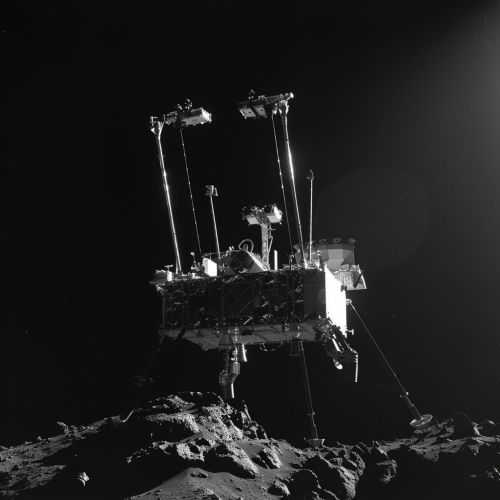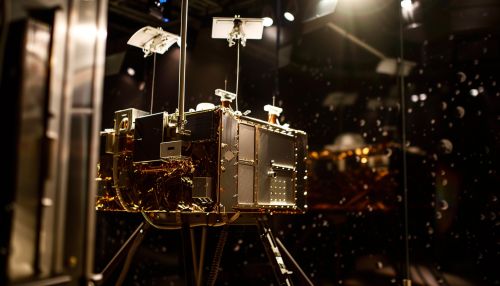Philae (spacecraft)
Introduction
The European Space Agency's (ESA) Philae (/ˈfaɪliː/ or /ˈfiːleɪ/) is a robotic spacecraft that was deployed to the comet 67P/Churyumov–Gerasimenko (67P) as part of the agency's Rosetta mission. Named after the Philae obelisk, which provided a key to deciphering Egyptian hieroglyphs, the spacecraft was designed to perform detailed studies of the comet's surface and subsurface.


Design and Development
Philae was developed by a consortium led by the German Aerospace Center (DLR), the French space agency (CNES), and the Italian Space Agency (ASI). The spacecraft measures about 1m x 1m x 1m and is equipped with a suite of ten scientific instruments for studying the comet.
Mission
Launched in 2004, Philae traveled with the Rosetta spacecraft for ten years before reaching comet 67P in 2014. Upon arrival, Philae was deployed to the comet's surface, marking the first time a spacecraft had successfully landed on a comet. Despite a challenging landing that left the spacecraft in a less-than-ideal location, Philae was able to perform a series of scientific measurements before its batteries ran out.
Scientific Instruments
Philae's suite of scientific instruments includes a drill for collecting subsurface samples, a mass spectrometer for analyzing the composition of the comet's surface and subsurface, and a camera for capturing detailed images of the comet's landscape. Other instruments are designed to study the physical properties of the comet's surface, the interaction between the comet and the solar wind, and the comet's magnetic field.
Findings
Despite the short duration of its active mission, Philae made several significant discoveries. The spacecraft's instruments detected organic molecules on the comet's surface, providing evidence for the theory that comets could have played a role in the origin of life on Earth. Philae also found that the comet's surface is much harder than expected, a discovery that has implications for future comet missions.
Legacy
Philae's mission, despite its challenges, was a significant milestone in space exploration. The spacecraft's successful landing on a comet and the scientific discoveries it made have provided valuable insights into these ancient objects and their role in the solar system's history. Philae's mission has also paved the way for future comet exploration missions.
